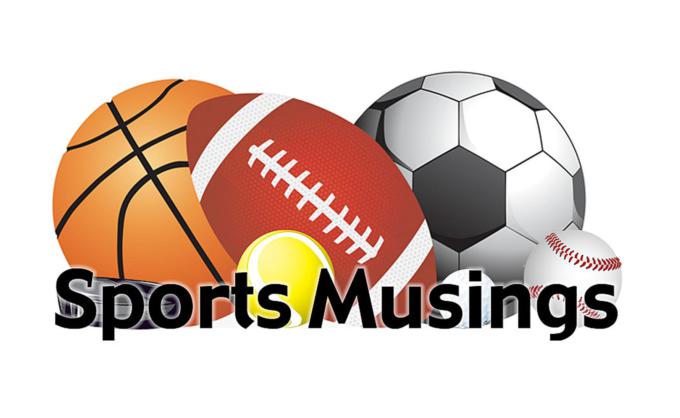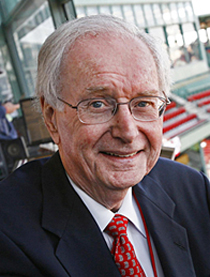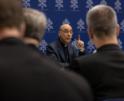
Culture
Football is a dangerous game and if you happen to be in the wrong place at the wrong time, as Darryl Stingley was, it can have devastating consequences.

Flavin
In early August of 1978, the New England Patriots reached an agreement on a contract extension with wide receiver Darryl Stingley. The Patriots were on the road at the time, in Oakland, California, for a preseason game with the Raiders on Saturday, Aug. 12, so it was decided to postpone the announcement and the signing until after the team returned home to Foxborough. The new deal would have made Stingley, who was only 26 but already an established star, one of the highest-paid receivers in the National Football League. He possessed blazing speed, was a deep threat, and was also used as a kickoff and punt returner.
In the exhibition game with the Raiders, starting teams were expected to be used only sparingly, just enough to get them used to game action, so the teams could get a look at their reserve players. But in the second period both starting teams were on the field when Stingley went out on a slant route across the middle for a pass from quarterback Steve Grogan. The pass, though, was wide and high, and as Stingley leaped in a vain attempt to grab it, he was hit viciously by the Raiders safety, Jack Tatum. No flag was thrown on the play as no rules had been violated. When it was over, Tatum scrambled to his feet and returned to his position in the Raiders' defensive backfield, but Stingley remained on the ground, motionless. He was tended to by the medical staffs of both teams before being strapped onto a stretcher, wheeled off the field, and transported to a local hospital.
As soon as the game was over, the Raiders coach, John Madden, sensing the worst, rushed to the hospital. There, he was told that Stingley had suffered a broken neck and was paralyzed from the neck down. There were no Patriots present at the hospital, as no one had notified the team of Stingley's dire condition. Madden decided to tell them himself and reached their charter flight by phone just before it was about to take off. The flight was aborted and the plane returned to the gate.
The announcement of the contract extension was never held, and Darryl Stingley never signed it or, for that matter, anything else. He would be a quadriplegic for the rest of his life.
John Madden visited Stingley almost daily during his stay at the hospital and the two became lifelong friends. The same cannot be said of Stingley and Jack Tatum, though. The two never had any contact after that night at the Oakland Coliseum. Tatum never showed any regret or exhibited any remorse for what many considered to be an unnecessarily violent hit. After all, it was just a preseason exhibition game and the pass was already incomplete.
Stingley remained with the Patriots, though never at the lofty salary he had negotiated before his injury. He served as executive director of player personnel until his death in 2007 due to heart disease and pneumonia, complicated by his quadriplegia. He had spent more than half of his life in his paralyzed condition.
Tatum, too, suffered from health issues. In 2003, his left leg was amputated below the knee because of diabetes. After his hit of Stingley, he was dubbed "the assassin," a sobriquet he adopted with enthusiasm. The two men never reconciled or ever spoke again. HBO lined them up to make a joint appearance on the 25th anniversary of the incident at the Oakland Coliseum, but when Stingley learned that Tatum was planning to use the appearance to promote his autobiography, "Final Confessions of NFL Assassin Jack Tatum," he canceled. Tatum died of a heart attack in 2010.
Greater restrictions were put on defensive backs following the incident, but football is a violent game and what happened to Stingley in that game seems to have been, in retrospect, inevitable. Patriots fans well remember Wes Welker and then Julian Edelman running countless slant routes across the middle of the field and Tom Brady passing to them with pinpoint accuracy whenever the Patriots really needed yardage. They both managed to hold onto the ball despite being hit with hellacious force on countless occasions. Their routes were similar to the one Stingley had run on that night in 1978. Both Welker and Edelman suffered multiple concussions, but neither was ever injured to the extent that Stingley was. But it's going to happen again. In almost every game, it seems that a player is taken from the field in a stretcher, and when it does, fans with a little mileage on them see visions of Darryl Stingley again.
Football is a dangerous game and if you happen to be in the wrong place at the wrong time, as Darryl Stingley was, it can have devastating consequences. It happens at the professional level and even below. It's the nature of the game.
It's tackle football, of course, and part of its attraction, whether we want to admit it or not, is the inherent danger involved. Otherwise, we'd all be watching touch football, and that's not going to happen.
- Dick Flavin is a New York Times bestselling author; the Boston Red Sox "Poet Laureate" and The Pilot's recently minted Sports' columnist.
Recent articles in the Culture & Events section
-
'Dignitas' and the mediaRussell Shaw
-
Scripture Reflection for April 14, 2024, Third Sunday of EasterDeacon Greg Kandra
-
St. Helena's House is established in the South EndThomas Lester
-
Is this synodality?Russell Shaw
-
Poking the hornet's nest of IVFFather Tadeusz Pacholczyk


















